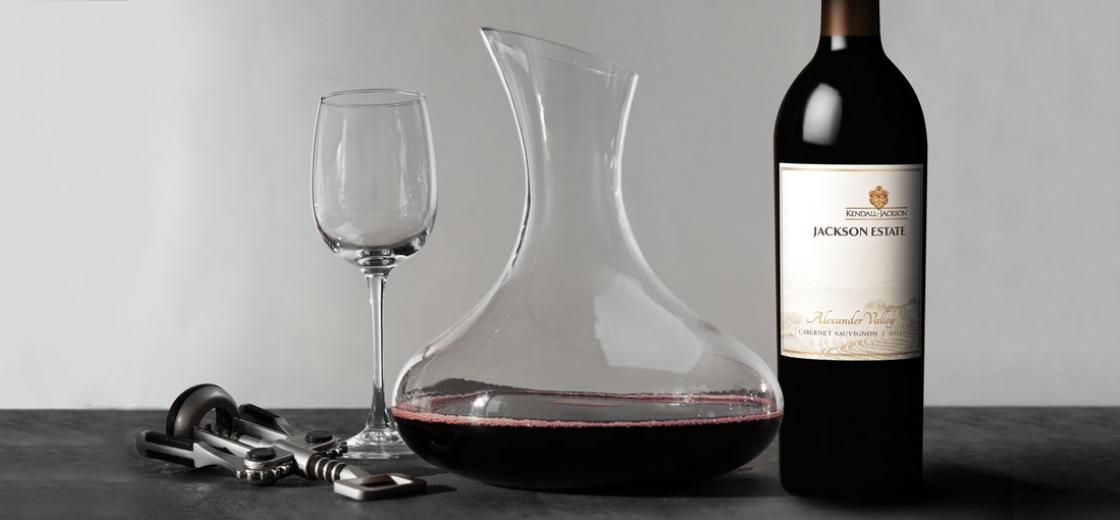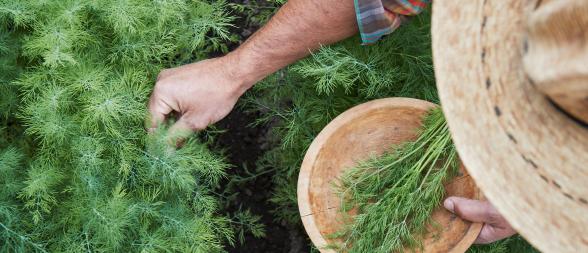
How To Clean a Wine Decanter
How to clean a wine decanter is more perplexing than how to clean wine glasses, which I covered in depth in my last post. Decanter shapes and sizes come in just as many forms as wine glasses, but their nooks and crannies and narrow necks are harder to downright impossible - in the case of Etienne Meneau’s vine root system-like decanters - to clean. Whether your decanter has spindly legs (as in Meneau’s designs), a big bottom (like a typical flat bottom decanter) or wears a corset (upright and “duck” styles), here are some tips for keeping your decanter clean before and after you use it.
Before Using Your Wine Decanter
Even if you have a seemingly pristine clean decanter, unless you use it at least a few times a week, you should give it a quick rinse before you slosh your wine into it. Wait! Don’t use water! The water coming out of your tap has chlorine in it, and as we have all experienced, some municipal systems have better tasting H20 than others. Instead, take the ounce you pour for yourself to make sure the wine smells right (or if you sip it, sacrifice another ounce) and tip it into the decanter. Coat the inside of the decanter to pick up dust or other particles then toss those drops down the drain. Now your decanter is “clean” in a different sense and ready to receive your carefully selected liquid!
Prepping to Clean Post-Use
I mentioned in my piece on 'How To Clean Wine Glasses' that it’s often a good idea to wait until the next day to clean wine glasses. (They are delicate, you may be tired, etc.) While you should at least give your wine glasses a quick rinse before bed, you should absolutely dump (or return to the bottle) any remaining wine from your decanter then give it a thorough rinse with hot water.
When you do clean your decanter, hopefully no later than the next morning, be sure to watch the lip, especially if the opening of the decanter is angled, when you have it under the faucet. I have chipped at least three such decanters, thinking the crystal was clear of the spout when it wasn’t.
Cleaning Agents
Purists tend to thoroughly rinse their decanters only with hot water, but that doesn’t get them clean enough in my opinion. Built up wine stains look seriously unattractive.
Specialty decanter and crystal glass cleaners are readily available, but I have found them to leave a chemical smell. I can’t explain how this could be as the liquid smells neutral. However, the glasses always smelled like the cabinet under the kitchen sink (where I keep all of my household cleaning agents) when I used them.
I use Mrs Meyer’s Clean Day Dishwashing Liquid (any scent works) and plenty of hot water. I have also never had issues with Palmolive Ultra Strength. Use only a little bit, dilute well with water that is as hot as you can tolerate and rinse thoroughly.
My husband mentioned he had read about using denture cleaning or coffee brewer cleaning tabs to clean decanters. Wondering if this wouldn’t leave a taste in the decanter, I tried it. I filled a decanter with very hot – but not boiling water – and popped in an Efferdent tablet. The scrubbing bubbles did their gritty work and left no taste behind. (I checked by comparing a glass of filtered water straight from the fridge and in the decanter.) Though the decanter wasn’t wine stained, it did look sparklier afterward. I now would absolutely use this trick, especially for decanter shapes where metal beads are less effective.
Speaking of life hacks, there are others out on the web that I would never use, even if they might be effective. One is using crushed ice and water. Crushed iced could scrape an expensive decanter. (Mind you, I haven’t tried it, but I’m not willing to take the risk.) Another is rice or crushed eggshells with water. I easily can imagine that last, tiny scrap of clingy eggshell or grain of rice that refuses to detach from the shoulder of the decanter. Grr. And, unless you’ve saved your decanter cleaning for the morning and are making scrambled eggs, who wants to go through the process of wasting several eggs for their shells? White wine vinegar is also suggested, but why put wine-gone-bad (that’s vinegar) in a vessel to hold perfectly good wine? Besides, if you have ever tried cleaning your coffee pot with vinegar, you know that it leaves a pungent smells for at least several batches of brews.
Wine Decanter Cleaning Tools
Gizmos aplenty are available to clean decanters. My absolute favorite are decanter cleaning beads. These work best for flat bottom decanters. They gently scrub the impossible to reach bottom thoroughly. One of the tricks of using them is getting them out of the decanter without them scuttling down the drain or all over your kitchen floor. I use a large mesh strainer, like a chinois, to pour out the beads. Be sure to rinse the beads thoroughly with hot water then allow them to dry on a towel before storing them.
I have never found a decanter sponge brush, even the ones designed to bend anywhere along the brush, to be effective for anything other than cleaning the neck of a flat-bottomed decanter. Along with specialty cleaning agents, they are just another good way to waste a Hamilton in my opinion.
While writing this piece, I discovered a clever tool called a Cuisipro Magnetic Spot Scrubber. I haven’t tried it but it looks like it might be worth a try the next time an inky red tries to permanently penetrate my decanter. I’m not convinced that the magnet can rub the interior of the glass as thoroughly as I could rub the exterior, but I won’t know until I try.
If you are lucky enough to have a decanter that is shaped such that you can get a kitchen sponge into, be sure it is clean. Putting a microbe-filled or grease-laden sponge into your decanter is not going to produce the results you are hoping for.
How To Dry a Decanter
Finally. Your decanter is spotless! How do you keep water spots from ruining its appearance for your next use?
While still warm from washing, dry the exterior of your decanter with clean lint-free towels, like flour sack or microfiber towels. There’s nothing like smearing something from your dinner prep onto your freshly cleaned decanter and having to start over. If you don’t have these types of towels, inexpensive paper towels (which have little softness and hence little lint) are better than tea towels and plush hand towels.
To dry the interior, decanter drying racks are the most effective, at least for flat-bottom decanters. Before you plop your decanter down on one, be sure the stand has the weight to support the decanter. Lead crystal is heavy! If you don’t have one, be careful with how you prop your decanter upside down so that it doesn’t roll. If you cannot turn it directly upside down, you may have to turn it a few times over several days to get all the water out of the bottom. Be sure your decanter is entirely free of moisture before you store it.
How to Store a Wine Decanter
It is ideal to store a decanter in a place with air circulation. Cupboards and cabinets often harbor smells (another good reason to “season”, or pre-clean, your decanter with wine before using it.) If you have a decanter lid or stopper, definitely use it to prevent dust from collecting in the decanter.
That’s It!
Ready to thrown in the flour sack towel? Does all of this sound way too complicated? You have glasses to clean, too, after all! If so, you could always use an open-mouthed crystal or glass water pitcher. Cleaning is a zip with those, and they have a chic casualness to them. You could also decant directly into the wine glasses you’re going to be washing anyway earlier than you plan to sip the wine. Whatever you choose, rest assured your wine – even your white wine – will absolutely benefit from decanting, unless it is decades old (then the jury is out on technique).





